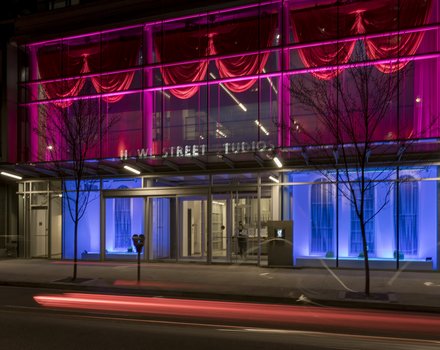

Fabiola Carranza “Aedes Hallucinates in the Jungle”, Fabiola Carranza
C$ 0.00 Excl. tax
- File number: EXHI1052
...
Malaspina Printmakers is pleased to announce a solo exhibition of new work by Fabiola Carranza, opening on Thursday, September 8, from 6 to 9pm in conjunction with SWARM 17.
Signs organize the relationship humans have to space and circumstance. The three signs in Aedes Hallucinates in the Jungle envision three voices by sampling speech bubbles from an old Spanish-language comic book targeted primarily at female readers, and a passage from a French novel. The texts point toward the limit between universal and individual experiences of violence, pleasure and filiation. They hint at a shared perilous circumstance, one further implied by a mural made of nearly 5000 anti-mosquito citronella patches.
The exhibition’s title, Aedes Hallucinates in the Jungle, refers to a genus of mosquitos that includes, Aedes aegypti, vector of yellow fever, zika and dengue. These diseases are transmitted by the two-winged female of the species, whose long proboscis pierces the skin of humans and animals alike and sucks their blood (Gallagher).
With the spread of zika virus (ZIKV) throughout Central America, the precautions that can be taken by people in the region are more often placebos than working solutions. Citronella anti-mosquito patches are sold throughout Central America, yet their use as an insecticide is prohibited in the United States, where viral transmission by local mosquitos is now confirmed. Other more toxic modes of action have been shown to have greater efficacy. Yet citronella can increase heart rate, one of the reasons its use as an insect repellant was briefly banned in Canada from 2012 to 2015 (Schwarcz). To be effective, citronella should be reapplied every 30-60 minutes. Yet in Central America a person will wear one or two of these patches on their clothes and replace them only after 24 hours.
ZIKV primarily affects pregnant women and their unborn fetuses. It can also be transmitted by any kind of sexual contact. It can live in semen for up to six months and gestates in the vagina. The zika outbreak in Central America stresses the lack of rights of women, as abortion is illegal in many countries in the region. Since the outbreak, men and women of childbearing age have been cautioned to practice abstinence and/or avoid pregnancy for at least five years after exposure, while foreigners intending to travel to the region are advised to postpone their visit.
This exhibition harrows at the bone of difference, both political and physical. The viewers’ ability to recognize the objects and signs exhibited points to the formation of structures of power. It denotes what happens here, what violence lays elsewhere, and poses questions such as: to whom is a threat made? And where is pleasure begot?
Works cited:
Gallagher, James. Zika outbreak: The mosquito menace. BBC News. 29 Jan. 2016. Web. 6 Sep. 2016.
Schwarcz, Joe. You asked: why is Canada banning citronella-based insect repellants? McGill Blogs. 3 Sep. 2014. Web. 3 Sep. 2016.
Lost
Display your courtesy e-mails
Badges of steel
I am not clairvoyant
but this is the truth in case:
I’ll give you roses for your embryos
Peaches for your glares
Staring far into the night skies that whimper
roses rose rose in roses raises
Rhinoceros boys with short hair
Rihanna rows low
mine clan, mein!
rhymes sane, limes
woah woah woah woah
blurb, a burp of meat and sweat
Aedes hallucinates in the jungle
Kairos and the zika virus.
— Marseille, 2016.
Fabiola Carranza is a Costa Rican/Canadian artist who makes photographs, videos, sculptures, paintings, and drawings that examine visual, cultural and personal phenomena. Carranza holds a MFA from University of British Columbia and a BFA from Emily Carr University. Solo exhibitions include, Apocalypse at Solentiname (Hardscrabble Gallery, Vancouver, 2012), El hábito de estrofas (Des Pacio Gallery, San José, 2011) and Sample Text in Vietnamese(Lobby Gallery, Vancouver, 2007). Carranza has participated in group exhibitions at The National Gallery of Costa Rica, (San José), the Contemporary Art Gallery, Artspeak Gallery and Access Gallery (Vancouver). She recently completed an artist residency in Marseille, France. Her first public art commission, Seven Signs, is on view at Waterfront Park in Seattle through October 2016.



